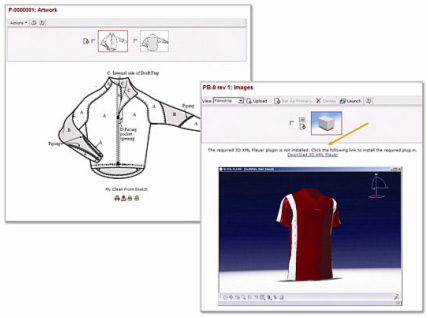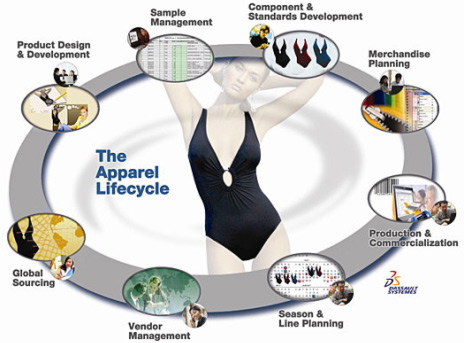| |
| |
Two years ago, when apparel maker Guess opened a purchasing office in Hong Kong and acquired a design house in Florence, Italy, the company quickly changed from a mainly Los Angeles-based operation to one spanning multiple time zones and continents. All at once, the company realized it lacked effective tools for communication and coordination among its far-flung branches. "Fax and phones and e-mails are O.K.," says Guess Chief Information Officer Mike Relich. "But you wonder, did the guy get it?"
Enter Dassault Systèmes, the world leader in 3D and PLM (Product Lifecycle Management). The company created a virtual online repository for Guess, enabling its staff worldwide—as well as outsiders such as suppliers and contract manufacturers—to view and collaborates on products from starts to finish. The change put everybody at Guess on the same page and smoothed the manufacturing process.

"The challenge in apparel goes to manufacturing," Relich says. "If you're building an iPod or an MP3 player or a cell phone, your specifications are set." In the fast-changing world of apparel, on the other hand, specs change constantly, he says. "If someone decides, 'I don't like blue thread, I want red,' then that's more challenging."
|
| New Software for a New Class of Clients |
PLM allows businesses to simulate and manage products from initial design through support and reengineering. PLM gives everyone involved in a product control over its creation and maintenance—and that has attracted a new class of clients, including makers of apparel and consumer products. In addition to Guess, Dassault Systemes has signed up sportswear makers Adidas and New Balance, Korean electronics giant LG, and even architecture luminary Frank Gehry, who uses the company's software to design his surreal buildings.

Dassault Chief Executive Bernard Charlès notes the apparel sector traditionally hasn't been particularly tech-oriented. But more companies like Guess are turning to Dassault to get a leg up in the increasingly fast-paced world of fashion. Indeed, with businesses such as Zara and H&M introducing new items nearly every week, fashion houses are eying to reduce their "concept-to-store" lead time to less than the current U.S. average of 11 months, according to a June, 2007, report by AMR Research.
|
| Helping to Catch Nike |
Designers, suppliers, manufacturers, and buyers are often scattered across the globe, however, so speeding up collaboration can prove difficult without the help of new technology. That's one reason Dassault acquired MatrixOne in 2006, to expand its PLM offerings for the high-tech, apparel, and consumer goods industries. MatrixOne was 11 years old at the time and had developed one of the first apparel-specific PLM applications—Apparel Accelerator. The combination of Dassault's longstanding expertise in the demanding world of 3D design and its software offerings tailored specifically for apparel makers made it a sure bet for Under Armour, a Baltimore sportswear company.
"If you can use their product to create 757s, we believe their product can help in the design of technical footwear," says Jody Giles, Under Armour's CIO. Indeed, the company is banking on Dassault software to help it take on Nike, Adidas, Reebok, and New Balance in the competitive athletic footwear category.
Dassault also has won over Gucci, Gap Inc, and dozens of other customers, but CEO Charlès says it's only the beginning. The company's latest gambit is a new 2.0 version of PLM that can be used not just to design products in 3D but also to power virtual-reality online retailing with unprecedented realism. "You're familiar with Second Life?" he asks. "Dassault Systèmes wants to do First Life."
|
|
|
|
